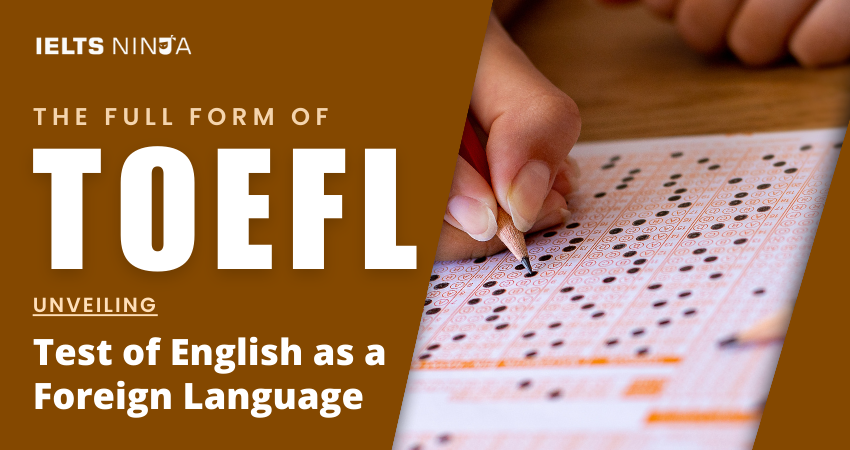The full form of TOEFL stands for “Test of English as a Foreign Language”, and it is an internationally recognized standardized test designed to assess the English language proficiency of non-native English speakers. The TOEFL test is widely used by educational institutions, employers, and immigration authorities as a measure of an individual’s ability to understand and use English in academic and professional settings. Here are key details about the TOEFL test:
Key Details of the Test of English as a Foreign Language (TOEFL):
Purpose:
The primary purpose of the TOEFL test is to evaluate the English language skills of non-native speakers who plan to study or work in English-speaking countries. It assesses the test taker’s ability to read, write, listen to, and speak English in academic and everyday contexts.
Types of TOEFL Tests:
TOEFL iBT (Internet-Based Test):
This is the most common and widely accepted form of the TOEFL test. It is administered online and assesses all four language skills—reading, writing, listening, and speaking. The TOEFL iBT includes tasks such as reading comprehension, essay writing, and oral communication.
TOEFL PBT (Paper-Based Test):
This version of the TOEFL test is administered in areas where the internet-based test is not available. It assesses reading, listening, writing, and grammar knowledge through a paper-and-pencil format.
TOEFLs Test Sections:
The TOEFL iBT test consists of four main sections:
- Reading: Test takers read and answer questions about academic texts, assessing their ability to understand and analyze written information.
- Listening: This section evaluates the test taker’s ability to understand spoken English in academic and everyday situations. Test takers listen to recorded lectures and conversations and answer questions based on what they hear.
- Speaking: Test takers express their thoughts and opinions on various topics. They respond to questions and complete tasks that require spoken responses, which are recorded and evaluated by raters.
- Writing: In this section, test takers write essays and responses to academic prompts. Their writing skills, including organization, coherence, and vocabulary usage, are assessed.
Also Read: Best online TOEFL coaching & training academy
TOEFL Scoring:
The TOEFL iBT test is scored on a scale of 0 to 120, with each of the four sections (Reading, Listening, Speaking, and Writing) receiving a score of 0 to 30. The scores from all sections are then summed to provide the total score.
Use of TOEFL Scores:
TOEFL scores are used for various purposes:
- Admissions: Many colleges, universities, and graduate programs in English-speaking countries require TOEFL scores as part of the admissions process for international students.
- Employment: Some employers use TOEFL scores to assess the English language proficiency of job applicants, especially in roles that require strong communication skills.
- Professional Licensing: Certain professional organizations and licensing bodies may require TOEFL scores as part of their certification or licensing processes.
- Immigration: Immigration authorities in some countries may accept TOEFL scores as proof of English language proficiency for visa and immigration purposes.
Preparation for TOEFL:
Test takers often prepare for the TOEFL test by studying test materials, taking practice tests, and enrolling in preparation courses. There are also official TOEFL test preparation resources available, including study guides and sample questions.
Test Centers for TOEFL:
TOEFL tests are administered at authorized test centers worldwide. Test takers can register for the test and choose a test center that is convenient for them.
Conclusion:
The Test of English as a Foreign Language (TOEFL) is a widely recognized assessment of English language proficiency for non-native speakers. It plays a crucial role in enabling individuals to pursue education and career opportunities in English-speaking countries and serves as a valuable tool for evaluating English language skills in academic, professional, and immigration contexts.








